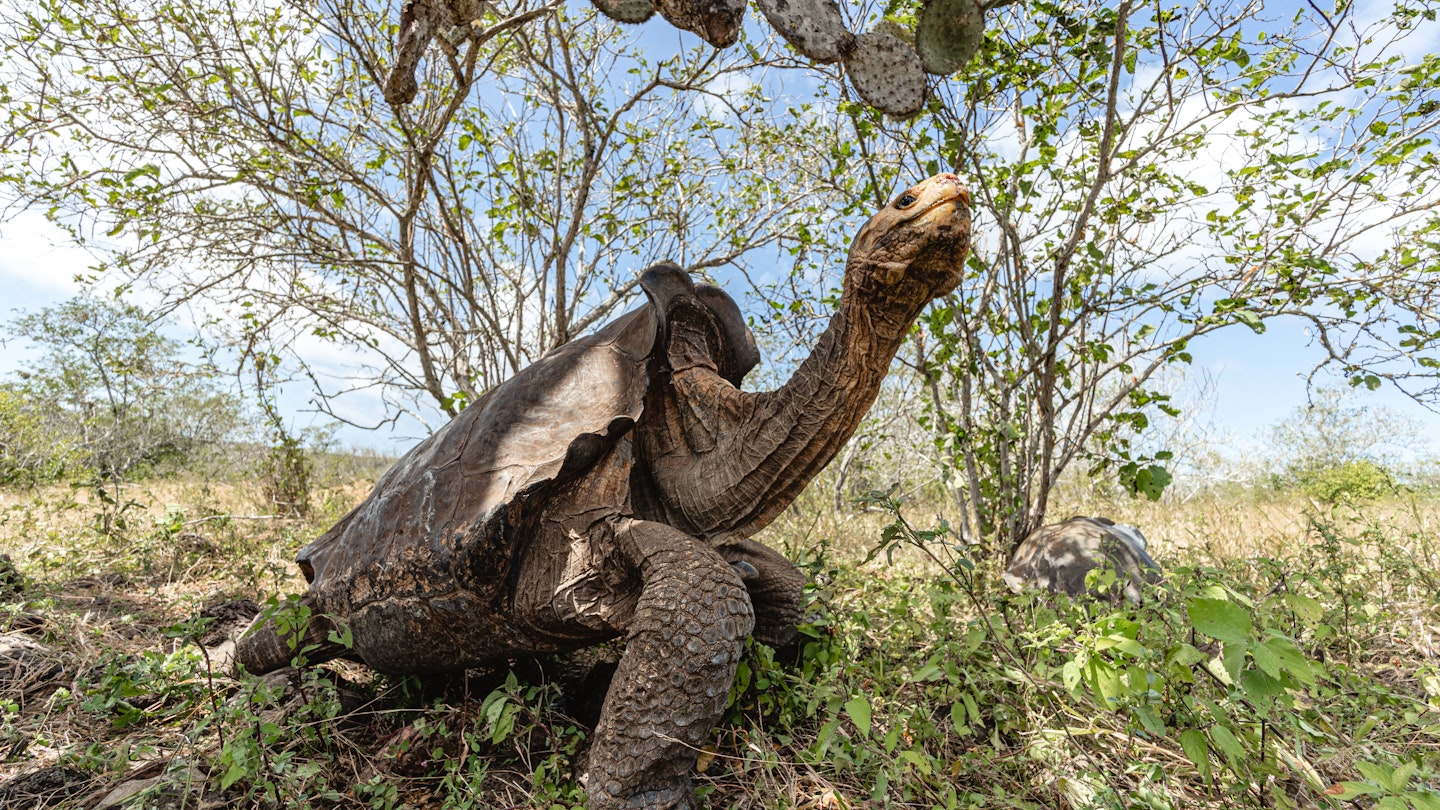The Remarkable Return of the Española Tortoise
Six decades ago, when Galápagos National Park was established, the giant Española tortoise was critically endangered, with only 15 individuals remaining. However, thanks to a meticulous 55-year-long captive breeding program, this species has successfully recovered from the brink of extinction. Consequently, those original 15 tortoises have been returned to their island habitat.
Restoration Success
The Galápagos National Park Directorate (GNPD) and Galápagos Conservancy announced the completion of the Española tortoise breeding program, part of the islands’ Giant Tortoise Restoration Initiative, in January. The goal to repatriate the tortoises in March faced delays due to the pandemic, but by mid-June, the original 15 were finally reintroduced into the wild. During their quarantine, they were de-parasitized and microchipped before being transported by boat from Santa Cruz Island to Española, traveling 1.5 miles inland to Las Tunas, an area deemed most suitable for their survival.

The Logistics of Reintroduction
According to Danny Rueda, director of the Galápagos National Park, “The 12 females, weighing an average of 77 lbs, were carried by a single person, while for the 3 males whose weight exceeded 120 lbs, two people were needed in relays.” After their release, the staff observed the behavior of the tortoises for approximately four hours to witness their reintegration. These tortoises will be monitored in person in about six months, with GPS tracking in the interim managed by the Galápagos Conservancy’s Washington Tapia.

Impact of Conservation Efforts
Since the inception of the Española tortoise program in the mid-1960s, the core group of 12 females and three males has been instrumental in reintroducing approximately 1,900 hatchlings to the wild. The population has thrived, now exceeding 2,300 tortoises, all of which trace their lineage back to those original 15. Notably, around 800 can be traced to one remarkable tortoise named Diego, formerly from the San Diego Zoo. Diego has spent decades contributing to the breeding program, accounting for an astounding 40% of the offspring returned to the island – a significant achievement for a tortoise over a century old.

Conservation Triumph
In a statement, Ecuador’s Minister of Environment and Water, Paulo Proaño, proclaimed, “We managed to save a species that would otherwise have become extinct. It can only be described as successful.” This significant conservation effort underscores the importance of sustainable practices, wildlife protection, and habitat restoration in preserving Earth’s biodiversity.
For further insights, explore relevant resources at galapagos.org.





